Samsung is one of the most popular consumer electronics brands in the world. Their products are known for their cutting-edge technology, premium design, and excellent build quality.
Samsung TVs are no exception, they are some of the most popular televisions on the market, thanks to their impressive picture quality, advanced features, and sleek designs. Samsung started making televisions in the early 1970s, and they have been a leading force in the TV market ever since.
In recent years, Samsung has become known for its innovative and high-quality TVs, which have won numerous awards and accolades.
However, like any other piece of electronics, Samsung TVs can sometimes have problems. An unfortunately common problem among Samsung TVs especially those which have been used for a few years is the device simply failing to turn on when the user attempts to activate it.
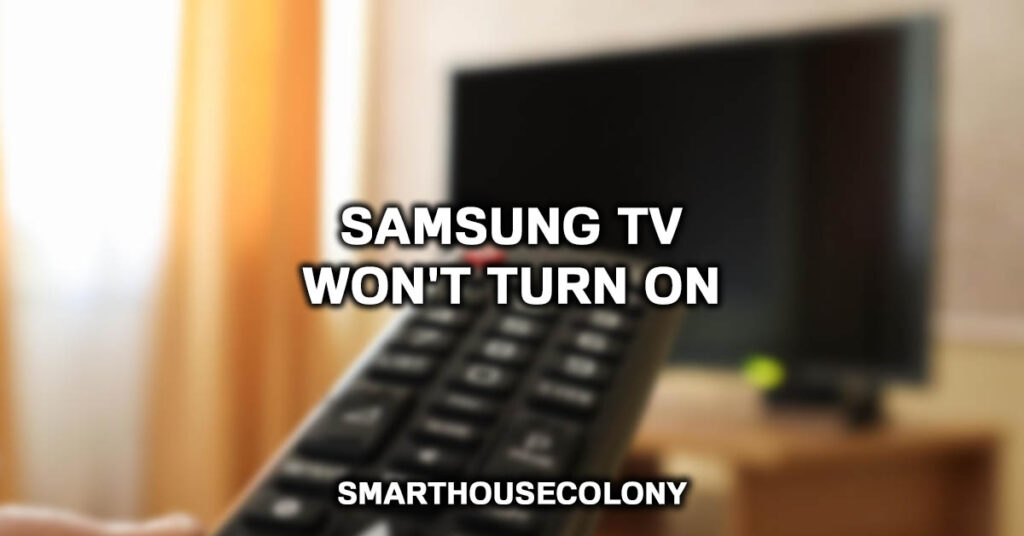
How could this happen: Why won’t my Samsung TV turn on?
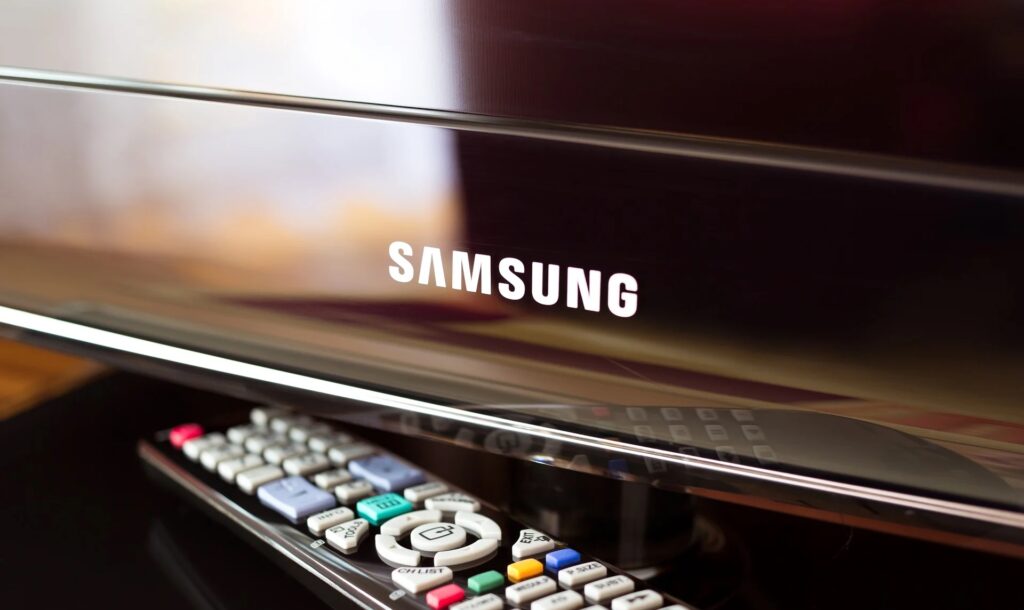
To determine why our TV isn’t working now it is crucial to understand why it does work normally. In order of importance, modern TVs require the following to display a picture:
- Power – All electronics need a power source.
- Correctly functioning hardware and software – Modern TVs are like small computers and almost as complex.
- A signal – A perfectly functioning TV cannot display anything if it is not given anything to display.
- A working remote control – A perfectly functioning TV, with a signal, cannot turn on if the remote is not telling it to.
Whilst these principles may seem obvious, thinking about them in detail can help us decide how to go about determining what the issue is and how we should start trying to fix it.
Status lights – What the Blinking lights on Samsung TVs mean.
As with many televisions, Samsung TVs have status lights that tell us what it is doing, and potentially how to go about fixing it if it’s not working correctly.
Light mode 1: Solid red.
This means that your TV is turned off. If you see a solid red light on your Samsung TV, it means that the television is turned off.
Light mode 2: Flashing red.
This means that your TV is in standby mode. If you see a flashing red light on your Samsung TV, it means that the television is in standby mode. The TV will remain in this state until you press the power button on the remote control or on the television itself.
Light mode 3: Solid green.
This means that your TV is turned on and working properly. If you see a solid green light on your Samsung TV, it means that the television is turned on and working properly. You should be able to see a picture on the screen at this point.
Light mode 4: Flashing green.
This means that your TV is receiving a software update. If you see a flashing green light on your Samsung TV, it means that the television is receiving a software update. The update process can take several minutes to complete, so please do not turn off the power to your TV during this time.
Light mode 5: Solid blue.
This means that your TV is in energy-saving mode. If you see a solid blue light on your Samsung TV, it means that the television is in energy-saving mode. In this mode, the backlight of the screen will be dimmed and the picture quality will not be as good as it would be in other modes.
However, this mode uses less power and can help to save on your electricity bill.
Light mode 6: Flashing blue.
This means that your TV is in demo mode. If you see a flashing blue light on your Samsung TV, it means that the television is in demo mode. This is often used in stores to show off the features of the TV. In demo mode, the picture quality will be reduced and some features may not be available.
A Troubleshooting Guide: The simplest tricks to Fix
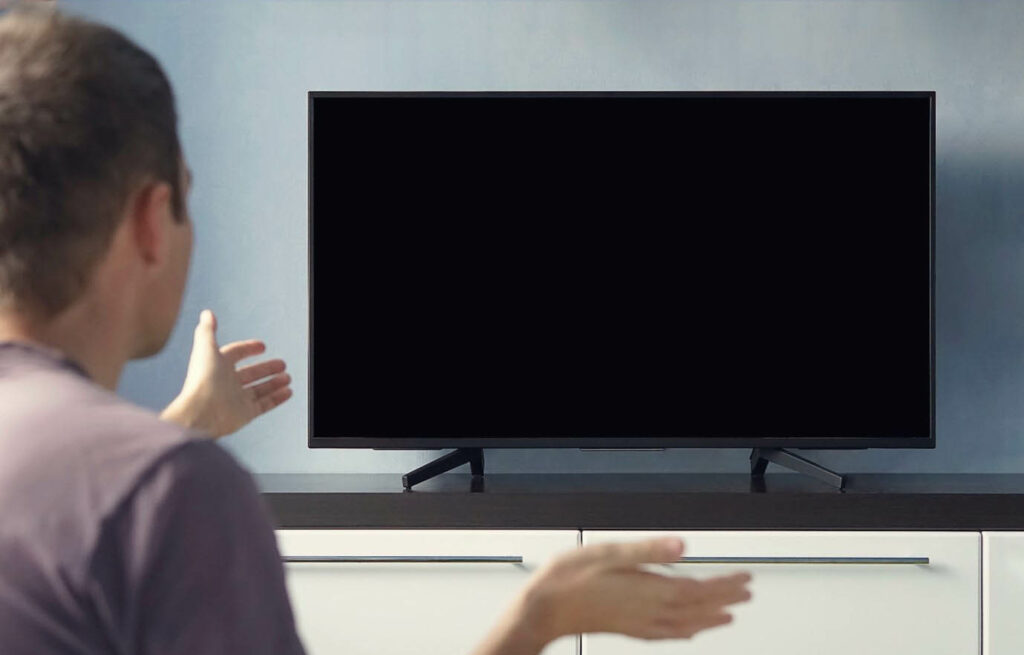
If your Samsung TV won’t turn on and you don’t know why yet, look no further. This handy troubleshooting guide is here to help, simply follow the steps in the sections that follow, and we’ll have your TV back up and running in no time.
Step 1: Don’t Panic.
I get it okay, you’ve tried to turn on your (potentially very expensive) television, and it just doesn’t. This can be upsetting but first, try to remain calm. Mashing buttons in frustration will not help, and could potentially make the problem worse.
It’s very unlikely that your TV is actually broken, as there are a number of potential causes for this problem. The power cable could have come out, the batteries in the remote might be dead, or a bird might have flown into the powerlines outside and cut off electricity to your house.
More often than not, the issue can be resolved with a bit of troubleshooting. So, take a deep breath, sit down and let’s get started, my friend.
Step 2: Checking Connections.
One of the most common reasons why a Samsung TV won’t turn on is because one or more of the cables connecting the TV to its power source are loose or disconnected.
If your TV is plugged into an outlet but not receiving any power, check to make sure that all of the cables are properly connected. Start by checking the power cord, if it’s loose or frayed, it could be causing the problem.
Next, check the HDMI cable(s), if they’re not properly plugged in, your TV won’t receive any signal from your cable box or other external devices.
Finally, check any other cords or cables that might be connected to your TV (such as an antenna cable). If any of these cables are loose or disconnected, simply reconnect them and try turning on your TV again.
If you’re absolutely sure that everything is connected as it should be, and your TV is still not turning on, proceed to step 3.
Step 3: Power Cycling.
Often derided as ‘turning it off and on again’ power-cycling is an important step in any electronics troubleshooting process as it can help to clear any potential errors or software glitches that might be causing the device to malfunction.
To power-cycle your TV, first, ensure that it is plugged into a working outlet using the correct cables. Once you have confirmed that the power cord is firmly plugged in, locate the power button on the back of your TV. It is often recessed and may require the use of a paperclip or other small object to press.
Once you have located the power button, press and hold it for 5-10 seconds. This will fully discharge any residual electricity in the TV’s circuitry and may help to resolve the issue. After 10 seconds have elapsed, release the power button and then press it again to turn on your TV as normal.
Step 4: Problems with the remote
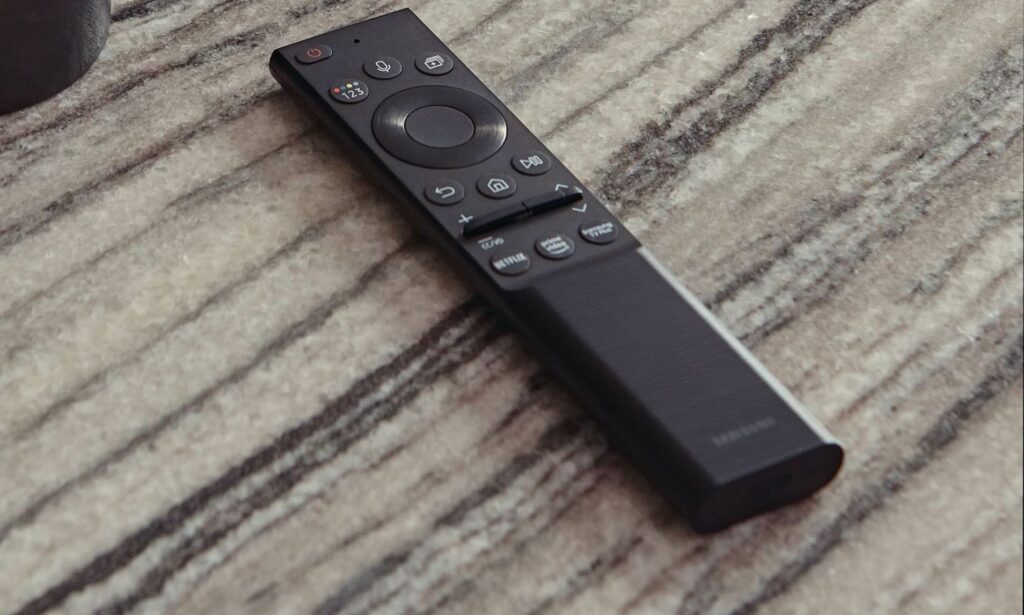
As mentioned in Step 1, one potential cause of a Samsung TV not turning on is low batteries in the remote control. If you are using a remote control to operate your television, check the batteries and replace them if necessary.
It’s also a good idea to clean the battery contacts with a cotton swab or other soft, dry cloth. Dirty or corroded contacts can prevent electricity from flowing properly, which can lead to all sorts of problems.
Expert Tip: If changing the batteries does not work, there is a chance that the remote control itself is faulty. In this case, you will need to purchase a new remote control from Samsung or an authorized retailer.
If you are unable to do so, try using a universal remote controller. After first making sure that your make of TV is listed as a compatible device on the remote’s packaging or in the manual, use the buttons on the TV to complete the following steps if possible:
- On your TV, find the ‘Source’ or ‘Input’ button. This is usually located on the side or front of the TV.
- Press and hold the ‘Source’ or ‘Input’ button for 3 seconds. This should bring up a menu on your TV screen.
- Find the ‘Universal Remote Setup’ option in the menu. It may be listed as ‘URC’ or ‘Universal Remote Control’.
- Select the ‘Universal Remote Setup’ option.
- Follow the on-screen instructions. You may be prompted to enter a code.
- Once the setup is complete, you can use your universal remote to control your TV.
If this does not resolve the issue, proceed to step 5.
Step 5: Changing the input source
It might well be that your TV is simply looking for an input signal where there isn’t one, in order to show a picture, your TV must be set to the input source matching the socket your input is plugged into.
You can determine what this should be by looking closely above or to the side of the signal cable socket, usually ‘HDMI’ followed by a number.
Assuming your remote isn’t working, you will need to use the buttons on the TV itself. Typically, there will be an “Input” button on the TV that you can press to cycle through the different input sources. Another way to change the input source is to use the Samsung TV menu.
To access this menu, press the “Menu” button on your TV. Then, use the arrow buttons on your TV to navigate to the “Input” option in the menu. Once you have selected this option, you will be able to cycle through the different input sources using the arrow buttons on your TV.
However, if your remote is working, there are a few different ways that you can change the input source on your Samsung TV using the remote. One way is to press the “Source” button on the remote control.
This will bring up a list of all of the available input sources. You can then use the arrow keys on the remote to highlight the desired input source and press “OK” to select it.
Another way to change the input source is to press the “Menu” button on the remote control. This will bring up the main menu for the TV. Use the arrow keys on the remote to navigate to the “Settings” menu and press “OK”. Then, navigate to the “General” tab and select “External Device Manager”.
From here, you can select the desired input source.
Step 6: Checking for Physical Damage
If your TV still won’t turn on, the next step is to check for physical damage. Start by unplugging the TV from the power outlet and then taking a close look at the power cord. Look for any frayed or damaged sections of the cord, as this could be causing an electrical safety issue.
Next, take a look at the back of the TV, where all of the cables are connected. Make sure that all of the cables are firmly connected and that there are no loose wires. Also, check for any signs of physical damage to the TV itself, such as cracks in the plastic casing or shattered screens.
If you find any damage, it is best to contact Samsung or an authorized service center for assistance.
If you can’t see any physical damage, proceed to step 7.
Step 7: Factory reset
If you have followed all of the steps above and your Samsung TV still will not turn on, your last resort is to reset the TV. This will restore the television to its factory default settings and should fix any software issues that might be causing problems.
Expert Tip: However, it is important to note that resetting your TV will erase all saved settings and preferences. So, if you do decide to go ahead with this step, be sure to write down any important information beforehand.
To reset your Samsung TV:
- Locate the reset button on the back of your TV. It is often recessed and may require the use of a paperclip or other small object to press.
- Press and hold the reset button for 5-10 seconds.
- After 10 seconds have elapsed, release the reset button and then press it again to turn on your TV as normal.
Why Won’t My TV Turn On But Red Light Is Blinking?
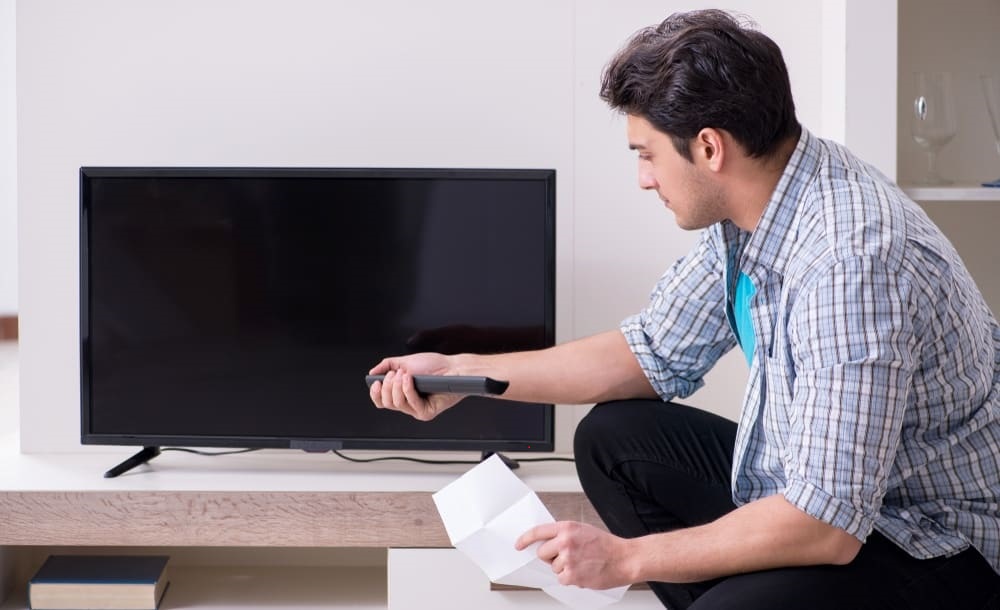
Technology can be very frustrating to deal with. You get home after a long day of work and just want to watch some tv. But every time you click the power button on the remote, nothing happens. It’s then you notice the red light in the bottom corner is blinking. Not to worry, here is what that little blinking red light means.
As with most devices, the color red is most used to alert the user of an issue. In the instance of TVs, this blinking red light usually means an issue is detected and service is required. There are a few options to try before calling your service provider.
First, unplug the TV for around one minute then try plugging it back in. If the TV still will not power on, try cleaning all the vents in and around the TV, including the cabinet it rests on if applicable. Finally, if you can get the TV back on, ensure all software is up to date.
If none of these options resolve the issue, it is time to reach out to the service provider.
What Does it Mean When the Power Light Blinks on My TV?
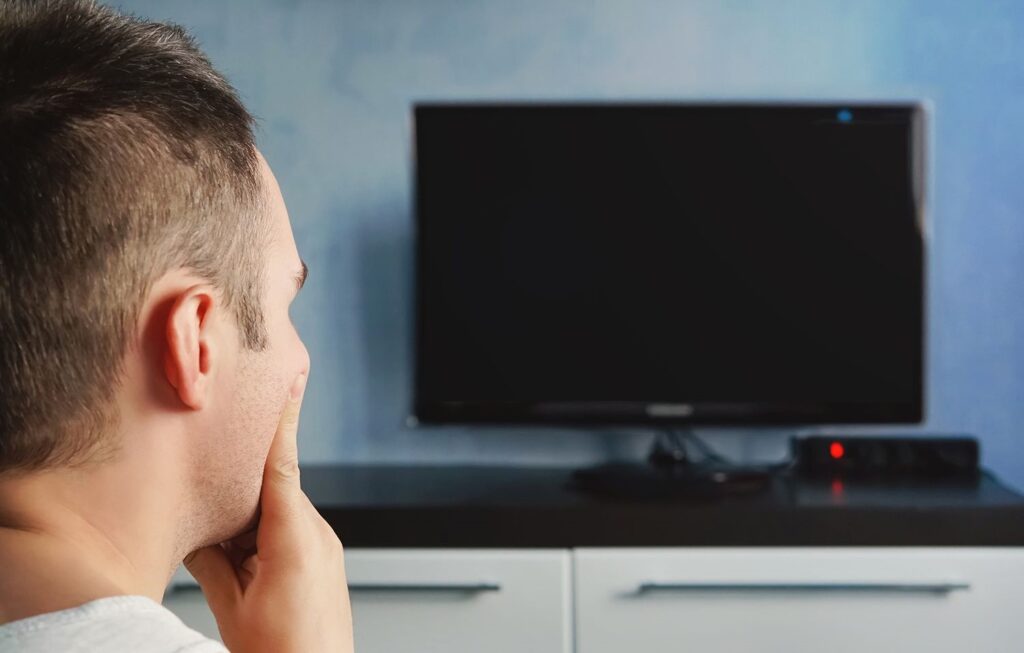
If you notice a red blinking light on your TV, this is usually an indication of a power supply problem. Sometimes, a TV may be running on its own for a long time without electricity, which can cause the IC inside to malfunction and not operate properly.
If you notice this behavior on your TV, try unplugging it and plugging it back in. The red blinking light should then disappear.
The power light blinking on your TV may also be caused by a problem with your surge protector. The surge protector could fail to provide power to the TV, and this can affect other devices plugged into it. Another cause of this problem is user error, such as a wrong source selection or improper connection.
Firstly, make sure that your TV is plugged into a wall outlet. This can solve the problem temporarily. If this doesn’t help, you may need to contact a professional electrician to check the problem. If your TV still doesn’t work, you may need to unplug it for a few minutes.
If you’re unsure which part of the television is causing the problem, you can try replacing the power supply board. However, if the power supply is not the problem, you can check the HDMI port and the other connected devices. You can also check the capacitors and fans for signs of broken or clogged ones.
Why is My Samsung TV Flashing and Not Turning On?
If you have a Samsung TV that is flashing and not turning on, the problem is probably with the mainboard. This problem can be fixed by calling Samsung support or bringing your TV to a service center. If this doesn’t fix the problem, you can always submit a warranty claim.
This problem could also be caused by a bad HDMI cable. A new HDMI cable can solve the issue. However, if the issue persists after replacing the cable, you should contact Samsung support for further assistance. Sometimes, a simple restart of the device will solve the problem.
Another possibility for a malfunctioning Samsung TV is a blown fuse. First, make sure that the power cord is in working order. If the power cord is fine, it will be okay to turn on the TV. Otherwise, replace the power cord. If you’re unsure, try testing the power supply by removing the power cable and plugging it back in.
If the problem persists, you may need to replace the power supply. If you’ve tried to power off the TV without powering it off, you may have a problem with the HDMI adapter. It can cause a black screen to appear. To fix this problem, connect a different HDMI cable to your Samsung TV.
Conclusion
We hope that this troubleshooting guide has been helpful in getting your Samsung TV up and running again. If you have followed all of the steps and your TV still won’t turn on, your best course of action is to contact Samsung or an authorized service center for assistance.
Thank you for taking the time to read this guide.
